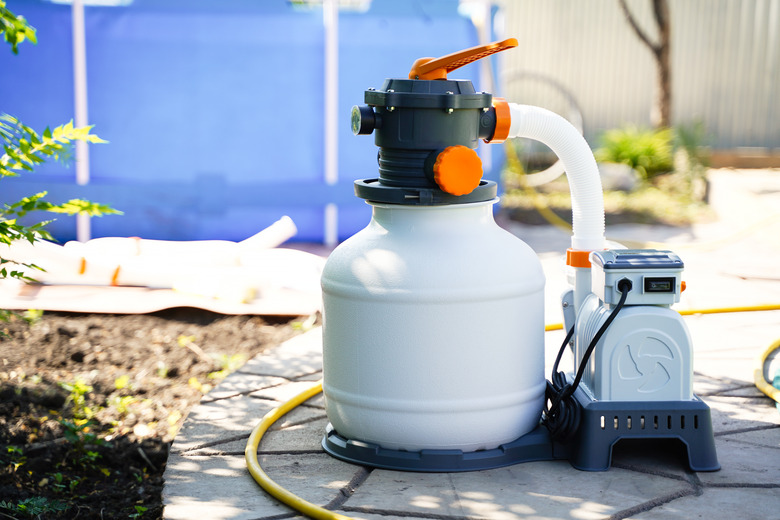How To Tell If Pool Filter Sand Needs To Be Replaced
We may receive a commission on purchases made from links.
If you have a backyard pool, there's a good chance you have a sand filter since they're the most popular type. Not only are sand filters relatively inexpensive, but they're also effective at pulling out the contaminants from your pool water. However, you'll need to replace the sand occasionally to keep the filter working correctly.
Why Sand Needs to Be Replaced
Why Sand Needs to Be Replaced
Your pool filter sand starts off rough and coarse, which allows it to grab the debris that runs through it to keep it out of your pool. Just as water erodes and smooths soil and rocks in nature, it also smooths the tiny sand particles inside your filter.
Eventually, the pool filter sand becomes smooth. Without the rough surface, the sand can't grab onto the particles it's supposed to filter. When it reaches that point, you need to replace it with fresh, rough sand that can effectively filter the contaminants. Changing the sand is part of routine pool maintenance, so knowing the signs is important in handling this task.
Look at the Calendar
Look at the Calendar
You can use timing as a general guideline for when to change your pool filter sand. It usually needs to be changed after about five years. Keep track of your sand changes and start looking for other signs that you need to change the sand as you get closer to the five-year mark. However, your sand will sometimes need to be replaced sooner, and sometimes, it can go longer. Looking for other signs can help you decide if the sand is the issue.
Check the Water's Appearance
Check the Water's Appearance
When the pool filter sand gets too old, it can no longer do its job. That's why it can change the appearance of your pool water. It can look cloudy or less clear than normal since the filter isn't doing its job correctly. This can also happen if your water chemistry isn't quite right, so test the water to make sure that's not the issue.
Look for Balling or Channeling
Look for Balling or Channeling
The sand also starts to act differently if it's near the end of its useful life. You might notice that the pool filter sand balls up or that clumps of sand end up in your pool. Another change in the sand can be channels created by the water. The failing sand affects the pressure in the filter, and the water eventually starts to create channels as it forces through the sand. At this point, the sand is no longer filtering the water.
Consider the Backwashing Cycle Length
Consider the Backwashing Cycle Length
Sometimes, you need to replace the sand due to a reason other than smoothness and old age. When the sand becomes dirty or greasy, it can shorten the backwashing cycles of your sand filter. The water creates channels through this dirty, greasy sand instead of filtering through it, so you'll need to change the sand to make the filter work correctly.
